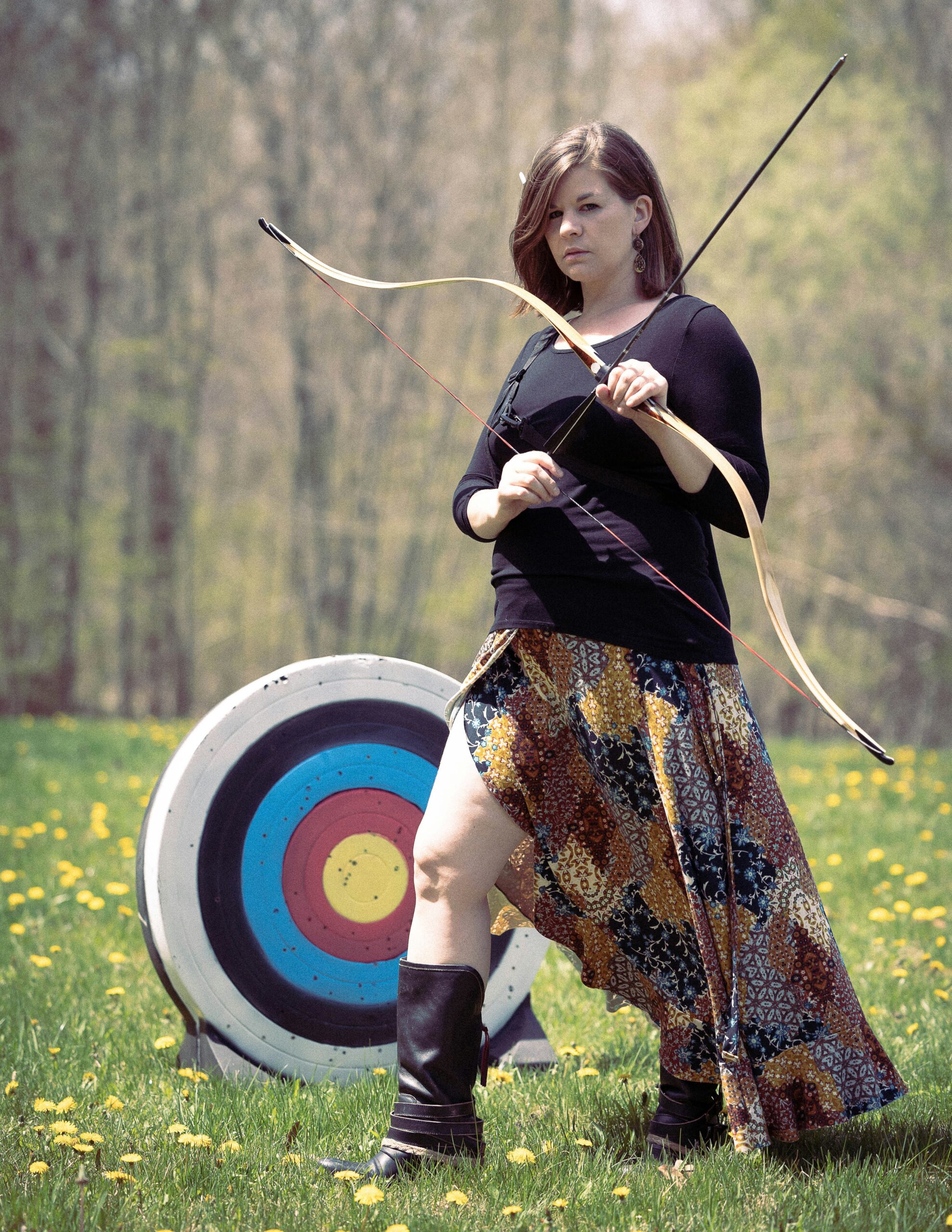Have you ever wondered if having the right optics can make a difference when you’re out in the wild with your bow, tracking game and keeping a keen eye on your surroundings? For many hunters, the use of optics in bow hunting is a game-changer, enhancing their experience and effectiveness in the field. Whether you’re a seasoned hunter or just getting started, understanding the role of optics can significantly improve your bow hunting skills and success rate.
Understanding the Basics of Bow Hunting Optics
When you’re out in the field, every decision can make a substantial difference. The choice of optics is one of those decisions. But what exactly do optics refer to in the context of bow hunting?
Optics refer to devices that improve your visibility and targeting, such as binoculars, rangefinders, and sights. Each comes with specific features tailored to enhance your hunting experience. Understanding the basics of these tools can set a solid foundation for employing them effectively.
The Role of Optics in Bow Hunting
The primary purpose of using optics in bow hunting is to enhance your ability to see, aim, and shoot accurately. Given the relatively shorter range of bows compared to firearms, having precise optics can help you ensure you’re accurately targeting game. This means the difference between a successful hunt and going home empty-handed. Additionally, optics can also aid in observing wildlife from a distance without causing alarm, thus preserving the natural behavior of animals until you’re ready to make your move.
Common Types of Optics Used in Bow Hunting
Several types of optics can be highly beneficial for bow hunters. Here, we break down the three most common and useful optics:
| Optic Type | Primary Use |
|---|---|
| Binoculars | Scanning the terrain and spotting game |
| Rangefinders | Measuring distance accurately to your target |
| Sights | Assisting with precision aiming while drawing back |
Each of these tools serves a different purpose but, when used in tandem, they can provide a comprehensive vision and targeting system for your bow hunting expedition.
Binoculars: Your Eyes in the Field
Among the most essential pieces of equipment for any bow hunter are binoculars. They extend your vision beyond normal eyesight, allowing you to spot your target or scout areas you intend to hunt.
Choosing the Right Binoculars
Selecting the right binoculars involves considering several key aspects such as magnification, lens diameter, weight, and durability. For bow hunting, binoculars with a magnification of 8x or 10x are generally ideal. These magnifications offer a good balance between image stability and field of view.
The lens diameter, which is usually represented in the format 8×42 (8 being the magnification and 42 the lens diameter in mm), influences how much light enters the binoculars. Larger diameters provide brighter images, which can be crucial during dawn or dusk hunts.
Why Field of View Matters
The field of view is essential in bow hunting because it determines how much of the terrain you can see through the binoculars without having to move them. A wider field of view enables you to capture more of the landscape in a single glance, which can be advantageous when scanning for game.

Rangefinders: True Distance Measurement
A rangefinder is a small device that helps you accurately measure the distance to your target. This is particularly important in bow hunting due to the shorter range and the need for precision.
How Rangefinders Work
Most modern rangefinders use laser technology, sending a laser beam toward your target and measuring the time it takes for the beam to return. This measurement is converted into distance, usually displayed in yards or meters. For bow hunting, some rangefinders also offer “bow mode,” which automatically adjusts for the angle of your shot.
Selecting the Best Rangefinder
When choosing a rangefinder, consider factors such as range, accuracy, and ease of use. A rangefinder with a range of up to 1000 yards can suffice for most bow hunting situations, even though you’ll rarely be shooting at such distances. Accuracy to within one yard is essential to ensure your calculations lead to successful shots.
Angle Compensation: An Added Bonus
Many modern rangefinders come with angle compensation technology. This feature accounts for the angle of elevation or declination in your shot, providing an accurate “shoots-like” distance. This is especially useful when shooting from a tree stand or at a target located on sloped terrain.
Sights: Precision in Aiming
Sights are mounted on your bow and are crucial for enhancing your aiming accuracy. They’re often equipped with pins that help align your shot at various distances, enabling a more precise shooting experience.
Types of Bow Sights
There are multiple types of bow sights, but they generally fall into three categories:
- Fixed Pin Sights: These are the most common and have multiple pins set for various distances.
- Moveable Pin Sights: These have a single pin that you adjust for distance on the fly.
- Pendulum Sights: Designed mainly for tree stand hunting, they automatically compensate for high-angle shots.
Selecting the Right Sight
The choice of sight depends on your personal preference and the type of hunting you plan to do. Fixed pin sights are excellent for beginners as they require minimal adjustment once set. If you’re confident enough to adjust on the spot, movable pin sights offer flexibility for varying distances. For tree stand hunters, a pendulum sight can be invaluable for automatic angle adjustment.

The Importance of Optics Quality
Now that you have a basic understanding of each type of optic, let’s delve into why the quality of these optics is so crucial. In bow hunting, the quality of your optics can determine your ability to spot game quickly and efficiently.
Optics Brands to Consider
When it comes to optics, not all brands are created equal. Quality often correlates with brand reputation, and several brands are known for producing excellent optics for bow hunting enthusiasts.
| Brand | Known For |
|---|---|
| Vortex Optics | Durable, high-quality binoculars and rangefinders |
| Bushnell | Affordable and feature-rich rangefinders |
| Truglo | Innovative and reliable bow sights |
Factors Influencing Optics Quality
Several elements influence the quality of optics, including lens coatings, build materials, and weatherproofing. Lens coatings can significantly reduce glare and improve image clarity, an invaluable aspect when you’re trying to spot game. Durable build materials ensure that your optics can withstand rough conditions, while weatherproofing guarantees operational reliability in rain, fog, or other adverse weather elements.
Maximizing Your Bow Hunting Optics
Once you’ve selected your optics, it’s essential to maximize their effectiveness. Proper use and maintenance can substantially enhance your bow hunting success.
Proper Usage Techniques
To get the most out of your binoculars, mastering techniques such as the three-second scan—where you scan an area, pause, then scan again—is crucial. For rangefinders, practicing rapid target acquisition in a controlled environment will make you more adept when in the field.
Maintenance and Care
Careful maintenance of your optics ensures they remain in excellent working condition. This includes regular cleaning of lenses with a microfiber cloth and proper storage when not in use. Avoid exposing your optics to harsh temperatures for extended periods, as this can damage delicate internal components.

Safety Considerations in Using Bow Hunting Optics
As with all hunting activities, safety is paramount when using optics. Using them responsibly not only ensures a successful hunt but also keeps you and those around you safe.
Ensuring Optical Safety
When using optics, always ensure your equipment is securely mounted and handled properly. Any loose components can affect your shot accuracy and potentially damage the equipment.
Laser Safety with Rangefinders
Most rangefinders use lasers, so it’s vital to handle these devices with care. Avoid direct eye exposure to the laser beam to prevent injury. Always ensure you’re aware of your surroundings to avoid accidentally pointing the laser at people or non-targeted objects.
Future Innovations in Bow Hunting Optics
Technological advancements continue to influence the world of hunting optics, with promising trends shaping the future.
Smart Optics
In recent years, we’ve seen the rise of smart optics that integrate digital technology for a more enhanced hunting experience. These include features such as digital magnification, integrated cameras, and heads-up displays that project vital information in real time.
Environmental Integration
Future optics may also see improvements in environmental integration, where devices intelligently adjust settings based on current weather conditions, time of day, or geographic location.
Conclusion: Tying It All Together
Optics play a critical role in bow hunting, offering hunters the tools needed for better visibility, accuracy, and overall success. Whether it’s the clarity provided by binoculars, the precision of rangefinders, or the aiming assistance of sights, each piece functions in harmony to support your hunting efforts.
By understanding the specific optics available for bow hunting and utilizing them skillfully, you’ll not only enhance your effectiveness but also enrich your hunting experience, ensuring every outing is as rewarding as it is challenging. So next time you gear up for a hunt, consider how the right optics can be your most vital tool in the great outdoors.
